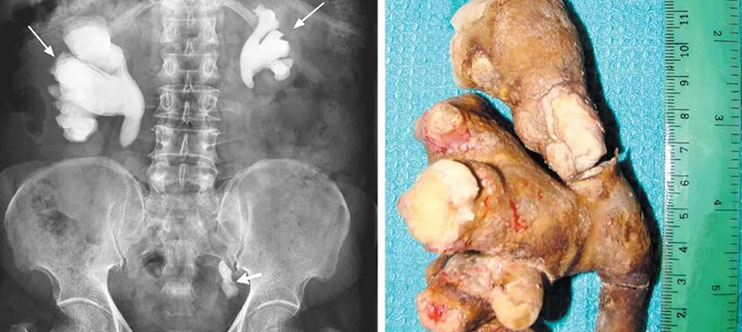

Pyelolithotomy is a surgical procedure performed to remove large or complex kidney stones located in the renal pelvis (the funnel-shaped structure that collects urine and channels it to the ureter). This procedure is typically used when less invasive techniques, such as URS (Ureteroscopy), RIRS (Retrograde Intrarenal Surgery), or ESWL (Extracorporeal Shock Wave Lithotripsy), are ineffective or unsuitable for the patient.
Indications for Pyelolithotomy
- Large Renal Pelvic Stones: Stones too large (>2 cm) to pass naturally or fragment with ESWL.
- Staghorn Calculi: Branched stones that occupy the renal pelvis and calyces.
- Persistent Kidney Obstruction: Stones causing prolonged urinary blockage and hydronephrosis.
- Recurrent Infections: Associated with retained stone fragments or persistent obstruction.
How is Pyelolithotomy Performed?
- Preoperative Assessment: Blood and urine tests to check for infection or other abnormalities.
- Anesthesia: Performed under general anesthesia.
Benefits of Pyelolithotomy
- Effective for Large or Complex Stones
- Direct Stone Removal
- Prevents Kidney Damage
- Minimally Invasive Options Available
Pyelolithotomy is a highly effective procedure for managing large or complex kidney stones that cannot be treated with less invasive methods. While open pyelolithotomy remains an option for severe cases, laparoscopic pyelolithotomy offers a minimally invasive alternative, resulting in faster recovery and reduced post-operative discomfort.